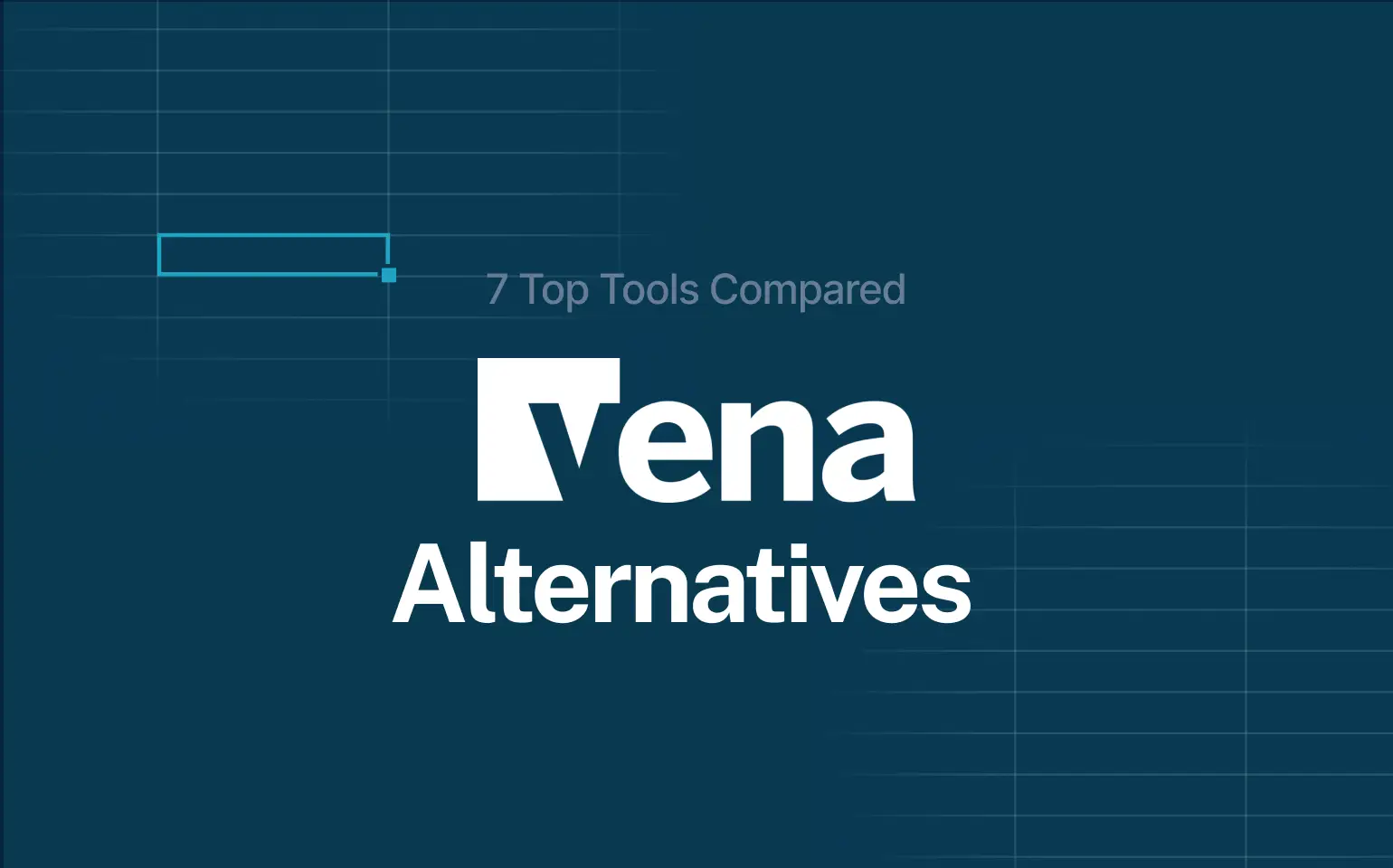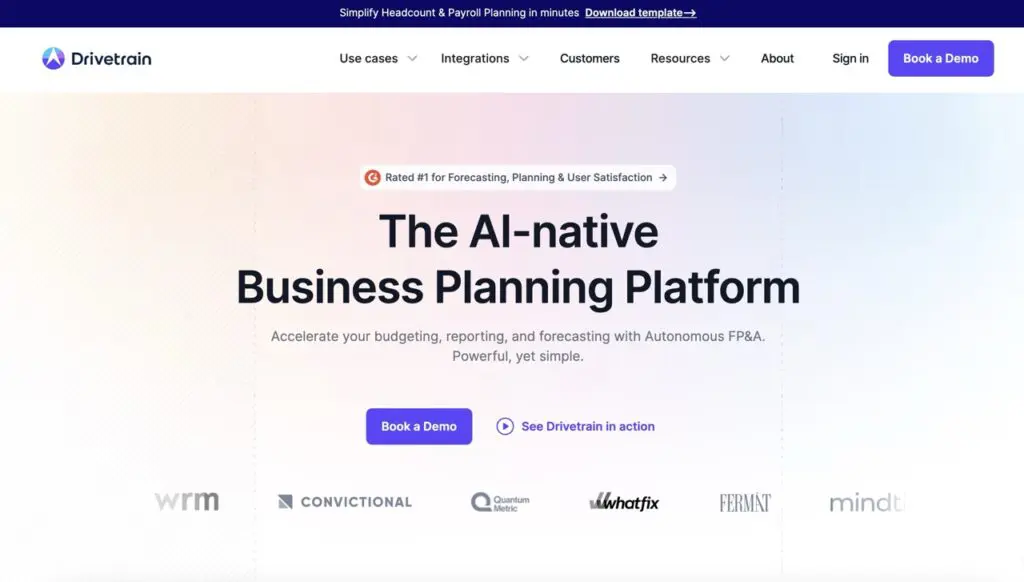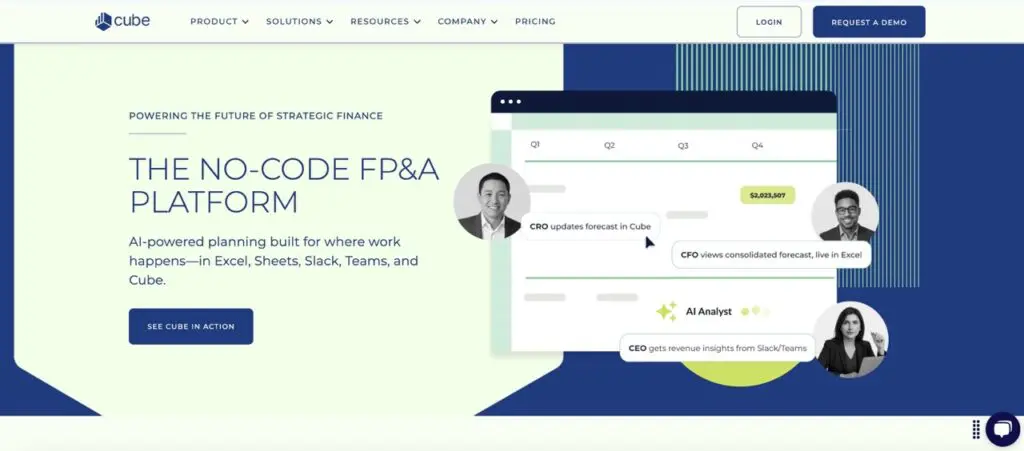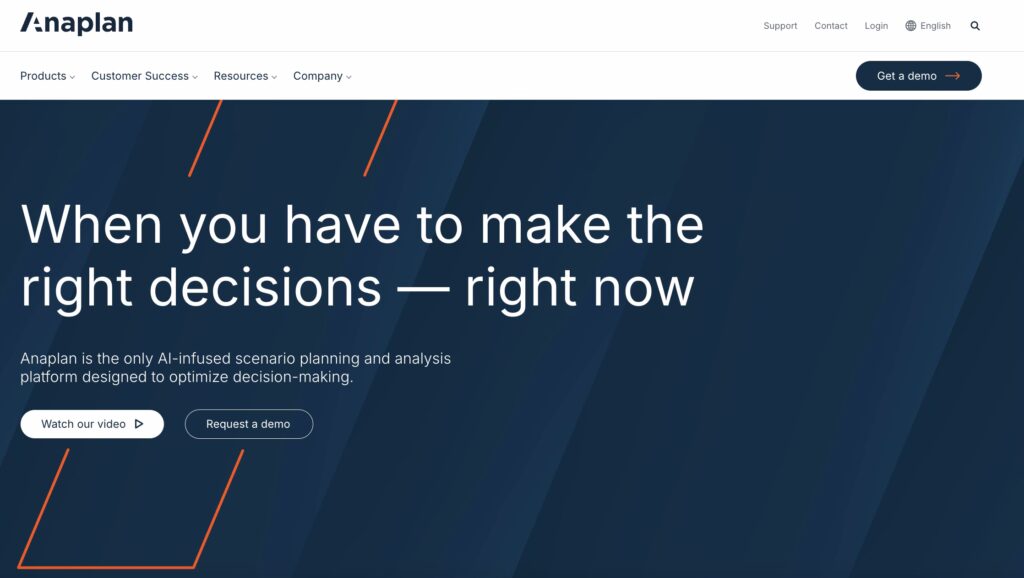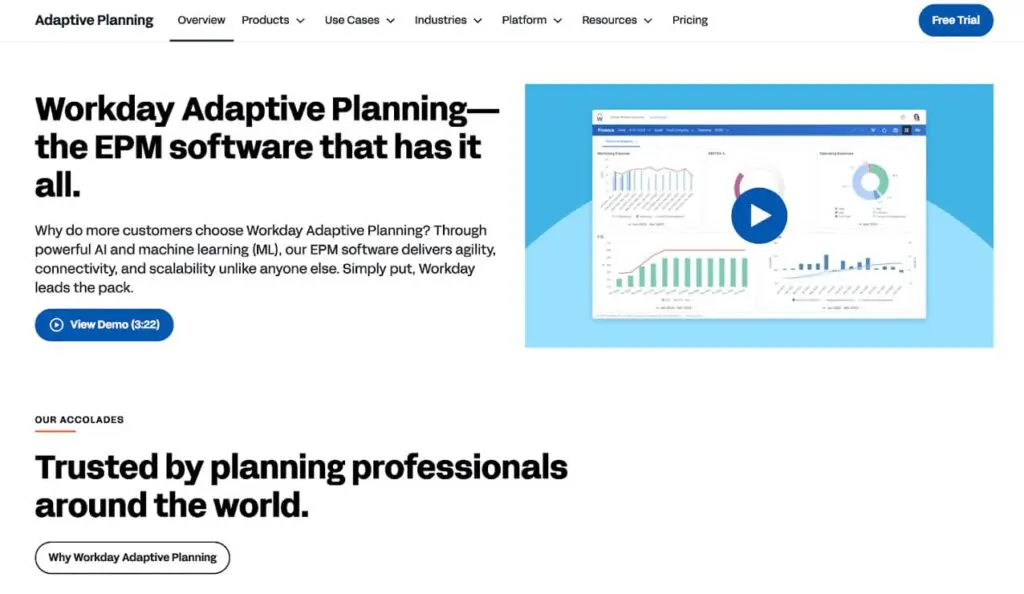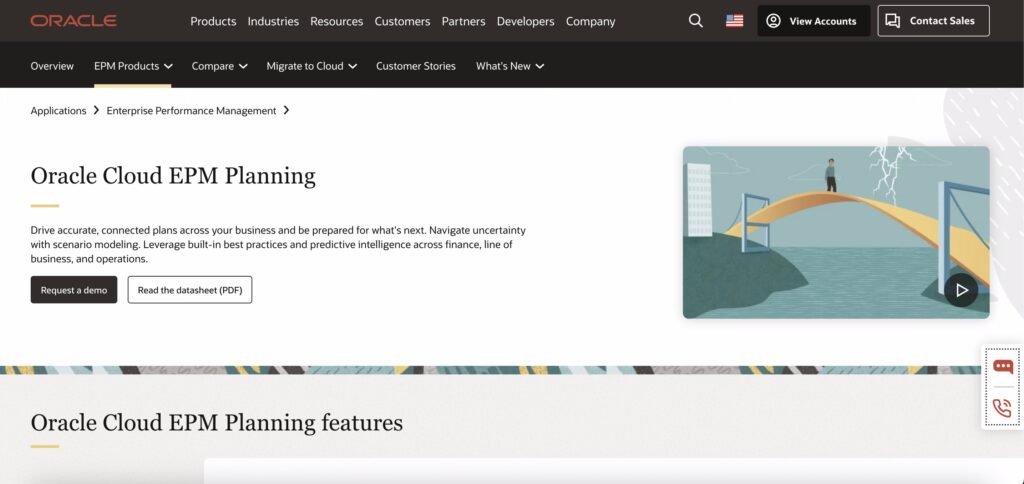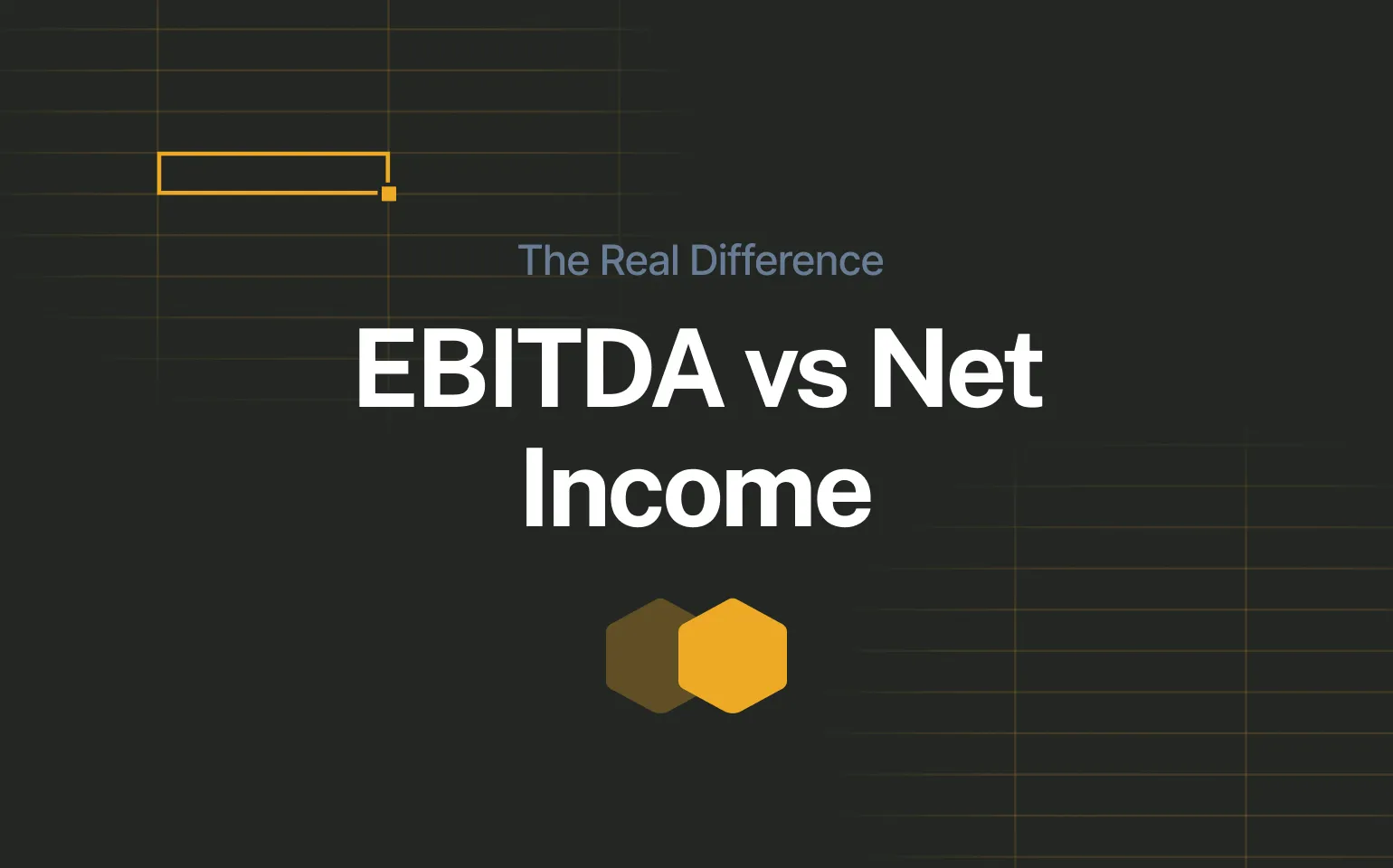So you’ve opted for Vena Solutions, but aren’t too happy about it and now you’re looking for a Vena alternatives?
No worries, we’ve done the heavy lifting for you – based on research of review platforms and customer experiences, we’ve compiled a list of 7 Vena alternatives that may be a better fit for your financial planning needs.
Especially if you’re dealing with complex operations or fast-changing planning cycles.
And if you work in an enterprise, we know you are.
Why Would You Look For A Vena Alternative
Vena is a well-known player in the FP&A space, especially for companies that prefer to stay within Excel. It promises a familiar interface, centralized data, and workflow automation. But for many finance teams, Vena introduces many limitations.
Here’s what Vena users in reviews on G2 and Capterra mind the most:
- Things start to slow down when working with larger models or during busy periods like month-end close.
- Syncing data from ERPs or other systems isn’t always smooth, which can delay reports.
- The Excel add-in can be unstable at times, and teams still end up doing manual checks to be sure everything’s accurate.
- The interface feels a bit clunky, and dashboard customization is pretty limited.
- It takes time to learn, especially for users who aren’t already deep into Excel formulas.
- Compared to newer, more agile tools, the overall cost of owning and running Vena can be pretty high.
These challenges are most visible in companies with multi-entity setups, large data volumes, and frequent reforecasting needs. For teams like these, Vena’s Excel-based architecture can start to feel like a bottleneck.
Top Vena Competitors to Consider
When evaluating FP&A software, it’s important to look beyond brand familiarity and consider how well a tool fits your company’s scale, complexity, and pace of change. Vena may be a strong option for Excel-centric teams, but finance leaders today often need faster modeling, real-time collaboration, and better automation than traditional tools can provide. That’s why exploring Vena alternatives can open the door to platforms that deliver more agility, scalability, and decision-making power for modern finance departments.
Here is a list of top Vena alternatives to consider:
Farseer – A Faster, More Flexible Vena alternative
Farseer, one of Vena alternatives, is a modern FP&A platform built for companies that have outgrown Excel and are looking for more automation, speed, and modeling flexibility, without the slowdowns and limitations of legacy Excel-based systems like Vena.
While Vena acts as a layer over Microsoft Excel, Farseer takes a different approach: it provides its own spreadsheet engine, built specifically for financial planning, modeling, and collaboration. This removes the instability and performance issues associated with Excel add-ins and delivers a more robust, scalable planning experience.
Why Financial Departments Choose Farseer
- Own spreadsheet engine: No plug-ins or compatibility issues. Farseer’s interface looks and feels like Excel, but is built from the ground up for performance, collaboration, and version control.
- Superior calculation engine: Enables instant simulations, ML forecasting, top-down and bottom-up planning, and driver-based models, all in one platform.
- Shorter implementation time: Compared to Vena’s often months-long rollouts, Farseer typically goes live in just a few weeks.
- FarseerAI creates forecasts, updates plans, sets filters, designs dashboards – basically makes your financial planning experience as easy and effortless as it gets
- 4–5x lower total cost of ownership (TCO): Farseer’s pricing and service model makes it far more cost-efficient over time, especially for mid-sized enterprises.
- Faster performance at scale: No lag when working with large data sets or complex models.
- Multi-scenario planning made simple: Teams can run and compare multiple planning versions without duplicating models or juggling files.
- Live collaboration across teams: Finance, HR, operations, and sales can work together in one platform with real-time updates and role-based access.
- No manual validations: All data is centralized and structured, no syncing errors or broken formulas.
- Strong ERP and BI integrations: Easy to connect to existing tools without IT bottlenecks.
Limitations
- Not ideal for very small teams with simple, annual budgets: Farseer’s strengths are best used in dynamic, multi-scenario environments.
- Advanced modeling features require some onboarding: Most teams adapt quickly with hands-on support, but initial training is required.
Pricing
Pricing starts at $20,000 per year, depending on company size and features.
Drivetrain – A No-Code, AI-Enabled Alternative to Vena
Drivetrain is a newer FP&A platform built for speed, flexibility, and ease of use, without relying on Excel. It’s especially suited for high-growth SaaS, services, or tech companies that want to move fast, build models without IT support, and automate key planning workflows.
Compared to Vena, which layers on top of Excel and often struggles with scale and sync issues, Drivetrain offers a clean break, a modern modeling environment with plain-language logic, real-time updates, and native integration with ERPs, CRMs, and data warehouses.
Why Financial Departments Choose Drivetrain
- No-code modeling: Models are built using plain English logic, removing the need for Excel formulas or scripting.
- AI-powered forecasting and anomaly detection: Helps automate plan vs. actual tracking, root cause analysis, and predictive insights.
- Real-time calculations: Models update instantly across dashboards and reports.
- Quick onboarding: Go live in as little as 4-6 weeks with minimal IT involvement.
- Clean, intuitive interface: Designed for business users, not technical analysts.
- Strong integrations: Prebuilt connectors for Salesforce, NetSuite, Snowflake, and more.
- Eliminates versioning issues: All stakeholders work in one centralized, real-time model.
Limitations
- Noticeable learning curve: Teams moving from Excel will need time to adjust to Drivetrain’s logic and structure. Model setup often requires support during onboarding.
- Partial self-service: Key data transformations like joins and mapping still rely on backend support. This limits flexibility for teams that want to manage everything themselves.
- Initial data preparation is time-consuming: Internal data cleanup is often needed before accurate reporting is possible.
- Performance can drop under heavy load: Some users report slowdowns during busy cycles, such as quarter-end close.
- Reporting and visuals need work: Built-in reporting lacks flexibility and polish. Users mention it’s not yet ready for board-level presentations without external formatting.
- Limited features for comparison and sharing: Year-over-year analysis, scenario switching, and export to external decks (e.g., Google Slides) are either missing or limited.
Pricing
There is no publicly available pricing for Drivetrain.
Cube – Spreadsheet-Native FP&A for Lightweight Use Cases
Cube is built for finance teams that want to speed up planning and reporting while still working in Excel or Google Sheets. It connects spreadsheets to a centralized database, adding structure and automation without changing the tools teams are already comfortable with.
Compared to Vena, Cube offers a lighter, more flexible experience with quicker implementation and easier adoption for smaller, agile teams.
Why Financial Departments Choose Cube
- Excel and Google Sheets integration: Work in familiar tools, with real-time syncing and version control.
- Quick to implement: Go live in a matter of weeks, with minimal onboarding.
- No new modeling language: All logic remains in spreadsheets; no need to learn proprietary formulas.
- Real-time data consolidation: Automatically pulls actuals from source systems and updates reports.
- Ideal for lean finance teams: Especially in high-growth SaaS, services, or decentralized orgs.
Limitations
- Limited modeling power: Cube doesn’t replace Excel; all logic stays in the sheet. There’s no built-in engine for driver-based models or top-down forecasting.
- No simulation or advanced automation: What-if planning and ML forecasts aren’t part of the platform.
- Scaling is a challenge: As data and complexity grow, Excel limitations resurface.
- Visualization is basic: Most teams export to PowerPoint or use BI tools for reporting.
- Not built for complex orgs: Multi-entity, multi-currency environments may outgrow Cube quickly.
Pricing
Starts at $15,000 a year with basic setup.
Anaplan – Enterprise-Grade Planning with Heavyweight Capabilities
Anaplan is built for large enterprises managing highly complex planning across departments, business units, and geographies. With its proprietary Hyperblock engine, Anaplan handles large-scale, multidimensional models that go far beyond Excel-based systems like Vena.
Why Financial Departments Choose Anaplan
- High-capacity modeling: Handles complex structures, large datasets, and cross-functional dependencies with ease.
- Cross-enterprise collaboration: Finance, HR, sales, and operations can all build plans within one ecosystem.
- Powerful scenario analysis: Supports advanced simulations and multi-variable forecasting.
- Trusted in large-scale rollouts: Used by global enterprises with hundreds of users.
- Highly configurable: Adaptable to virtually any corporate structure or planning methodology.
Limitations
- High learning curve: Requires learning a proprietary modeling language. Finance teams often depend on internal model builders or external consultants.
- Expensive and resource-intensive: Licensing, implementation, and ongoing maintenance costs are high.
- Slow time-to-value: Full deployments can take months or more, especially in complex orgs.
- Rigid for ad-hoc needs: Quick changes or exploratory modeling are more difficult than in lighter platforms.
- Interface is functional but outdated: Less intuitive compared to modern planning tools.
Pricing
Pricing typically starts around $200,000 annually, but the total cost depends on the company’s size, complexity, and specific configuration needs.
Workday Adaptive Planning – Strong Fit for Workday Users
Workday Adaptive Planning is a centralized planning tool well suited for large organizations already using Workday’s HR and financial systems. It offers structured workflows, driver-based forecasting, and workforce modeling built for the enterprise environment.
Why Financial Departments Choose Workday Adaptive Planning
- Tight Workday integration: Syncs directly with HR, payroll, and financial modules.
- Structured forecasting: Built for workforce planning, OPEX tracking, and operational forecasting.
- Enterprise-level security and auditability: Strong governance features for large finance teams.
- Scalable workflows: Supports budget cycles across departments with defined roles and processes.
- Reliable reporting and dashboards: Standardized reporting for management and compliance.
Limitations
- Best for Workday customers: Integration and value are strongest when already within the Workday ecosystem.
- High cost: Licensing and implementation are among the most expensive in the market.
- Slower performance with large models – Teams report lag when working with heavy data volumes.
- Limited flexibility: Ad-hoc modeling or on-the-fly changes are harder to manage.
- IT and consultant dependency: Finance teams often need external help for setup and changes.
- UI is dated: Compared to newer platforms, the interface feels older and less user-friendly.
Pricing
Pricing starts at approximately $50,000 per year, with the final cost increasing based on the number of users and selected features.
SAP Analytics Cloud – Best for Enterprises Already on SAP Stack
SAP Analytics Cloud (SAC) is SAP’s unified platform for planning, business intelligence, and predictive analytics. It’s designed for large enterprises with existing SAP ERP environments and offers centralized financial and operational planning with deep data integration across the SAP ecosystem.
Why Financial Departments Choose SAP Analytics Cloud
- Tight integration with SAP ERP & S/4HANA: Real-time data sync across financials, supply chain, and operations.
- All-in-one platform: Combines planning, reporting, and analytics in a single tool.
- Strong modeling capabilities: Supports multi-dimensional, driver-based, and predictive planning.
- Governance and security: Enterprise-grade controls and audit trails.
- Scalable for global organizations: Supports complex structures, currencies, and workflows.
- Advanced analytics: Built-in machine learning for forecasting and anomaly detection.
Limitations
- Steep learning curve: UI and modeling logic can feel overwhelming to non-technical users.
- Heavily tied to SAP stack: Offers the most value to companies already using SAP ERP or BW.
- Performance issues reported: Some users cite lag when handling large models or multiple concurrent users.
- Customization often requires IT: Self-serve capabilities are improving, but large deployments still depend on technical support.
- Expensive licensing and implementation: Costs scale quickly, especially with consulting services.
Pricing
A typical SAP Analytics Cloud contract for mid-sized companies runs around $90,000 annually, depending on user count and feature set.
Read Looking for SAP Analytics Cloud Competitors? Here Are the 5 Best Options
Oracle Cloud EPM – Robust But Complex Planning Suite
Oracle Cloud EPM is a powerful enterprise performance management platform built for global organizations with complex planning, consolidation, and reporting needs. It offers deep financial modeling capabilities, along with compliance, close, and narrative reporting tools.
Why Financial Departments Choose Oracle Cloud EPM
- Enterprise-grade consolidation and reporting: Handles IFRS/GAAP, intercompany eliminations, and currency translation.
- Advanced planning capabilities: Supports driver-based planning, top-down forecasting, and rolling forecasts.
- Strong audit, compliance, and access control: Built for large, regulated environments.
- Breadth of modules: Includes financial close, tax reporting, workforce planning, and more.
- Built-in automation and workflow: Streamlines approvals and planning cycles.
- Scalable across global entities: Trusted by some of the largest enterprises worldwide.
Limitations
- High implementation complexity: Deployment can take months and often requires Oracle-certified consultants.
- Steep cost structure: Licensing, customization, and support are among the most expensive in the market.
- Rigid user experience: Interface is functional but not intuitive; not designed for self-service modeling.
- Overkill for smaller teams: Many features go unused in mid-sized companies.
- Ongoing maintenance requires IT involvement: Not a tool that finance teams can manage independently.
Pricing
Oracle Cloud EPM uses a subscription-based pricing model with two primary tiers: Standard at $250 per user/month and Enterprise at $500 per user/month. Actual costs vary depending on the specific EPM modules used, implementation scope, and how many business processes are activated. There’s usually a 10-user minimum, and additional processes within the Standard edition may come with extra monthly charges.
Which Vena Alternative is the Best For Your Business
Choosing the right planning platform depends on your team’s size, complexity, and how far you want to move beyond Excel-based processes.
If you’re looking for speed, advanced modeling, and full control without the overhead of legacy tools, Farseer is a strong fit, especially for finance teams in multi-entity or fast-changing environments.
Tools like Cube or Drivetrain offer flexibility and fast deployment for teams that want to modernize without heavy infrastructure. SAP Analytics Cloud and Oracle Cloud EPM, on the other hand, are built for large enterprises with deep integration and compliance needs, but come with higher cost and complexity.
Want to see how Farseer fits your team’s planning needs? Book a live demo with one of our consultants and explore it in action.
